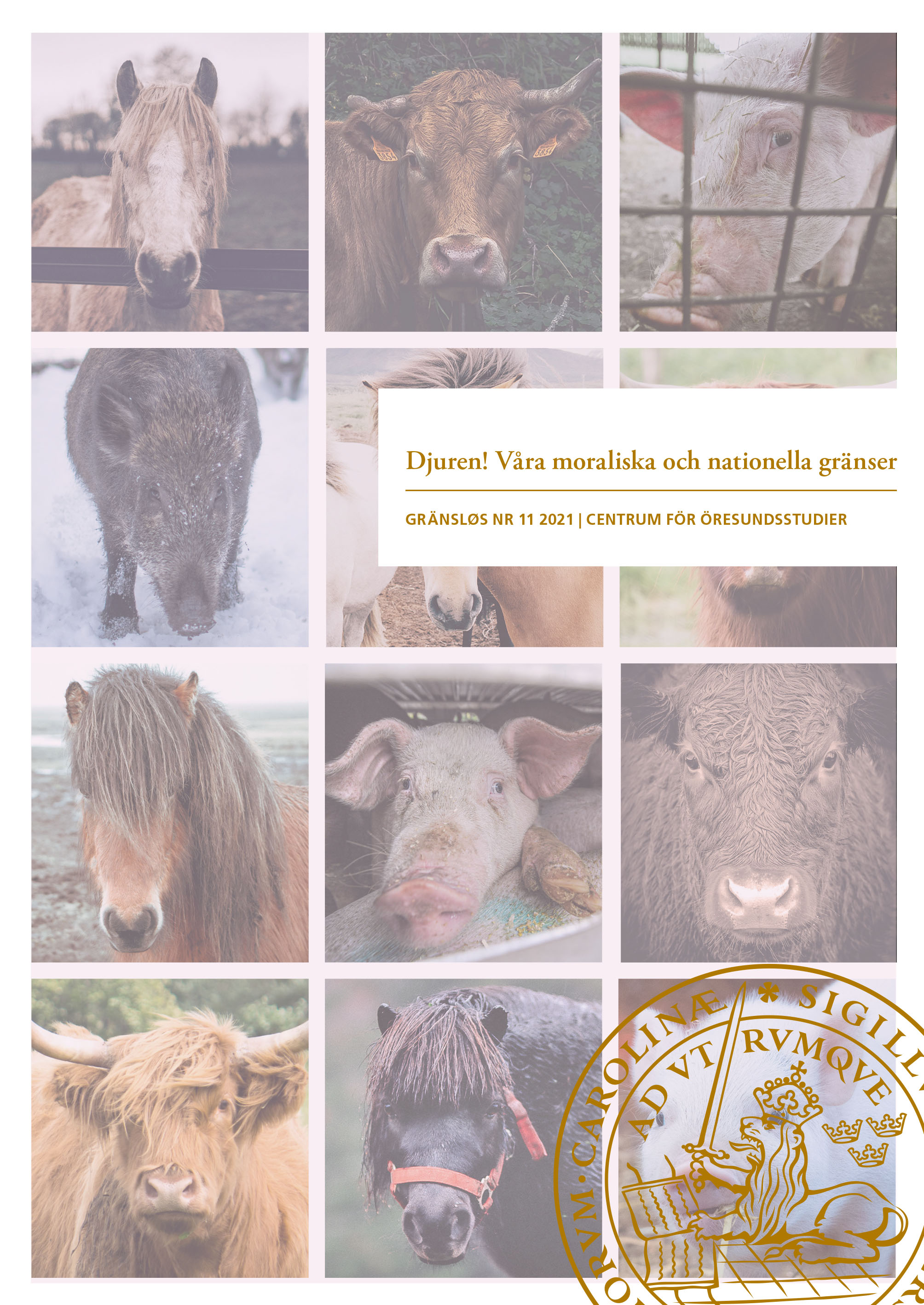Varför behandlas grisar så illa?
Keywords:
pig, pigs, Animal Rights, Critical Animal Studies, Human-Animal studies, Human-Animal relations, Representation of animals, Socio-zoological scale, Speciesism, Boundary work, Fatphobia, Fat hatred, Fascist ideologyReferences
Arluke, A. & Sanders, C. R. (1996). Regarding Animals. Philadelphia: Temple University Press.
Bacon, L., O’Reilly, C. & Aphramor, L. (2016). Reflections on Thin Privilege and Responsibility. In Cameron, E. & Russell, C. (eds.) The Fat Pedagogy Reader. Challenging Weight-Based Oppression Through Critical Education. New York: Peter Lang Publishing Group.
Bauman, Z. (1989). Modernity and the Holocaust. Maldon, MA: Polity Press.
Bekoff, M. (2007). The emotional lives of animals. A leading scientist explores animal joy, sorrow, and empathy-and why they matter. Novato, Calif.: New World Library.
Björck, A. (2014). Telling stories of humans, animals, and modernization. I Andersson Cederholm, E., Björck, A., Jennbert, K. & Lönngren, A.-S. (red.) Exploring the animal turn. Human-animal relations in science, society and culture. Lund: Pufendorfinstitutet.
Burt, J. (2006). Conflicts around Slaughter in Modernity. I The Animal Studies Group. Killing Animals. Urbana and Chicago: University of Illinois Press, ss. 120-144.
DeMello, M. (2012). Animals and society. An introduction to human-animal studies. New York: Columbia University Press.
Douglas, M. (1997). Renhet och fara. En analys av begreppen orenande och tabu. Nora: Nya Doxa.
Dunayer, J. (1995). Sexist Words, Speciesist Roots. I Adams, C. & Donovan, J. (red.) Women and Animals. Feminist Theoretical Explorations. Durham: Duke University Press, ss. 11–31.
Grumett, D. (2019). Aristotle’s Ethics and Farm Animal Welfare. Journal of Agricultural Environmental Ethics, 32(2), ss. 321–333.
Harari, Yuval N. (2018). Sapiens. En kort historik över mänskligheten. 2 uppl. Stockholm: Natur & Kultur.
Hribal, J. (2003). Animals are part of the working class. A challenge to labor history. Labor History, 44(4), ss. 435-53.
Hribal, J. (2007). Animals, Agency, and Class. Writing the History of Animals from Below. Human Ecology Review, 14(1), ss. 101-112.
Joy, M. (2011). Why we love dogs, eat pigs, and wear cows. An introduction to carnism. Berkeley, Calif.: Conari Press.
Langworth, R. (2008). Churchill by Himself. The Definitive Collection of Quotations. New York: PublicAffairs.
Maddison, A. (2007). Chinese Economic Performance in the Long Run, 2nd edn, Revised and Updated: 960–2030 AD. Paris: OECD.
Mills, C. W. (2000[1959]). The sociological imagination. Oxford, England: Oxford University Press.
Noske, B. (1997). Domestication Under Capitalism + The Animal Industrial Complex. I Noske, B. (red.) Beyond Boundaries. Humans and Animals. Montréal: Black Rose Books.
Nocella II, A. J., Sorenson, J., Socha, K. & Matsuoka, A. (2014). The Emergence of Critical Animal Studies. The Rise of Intersectional Animal Liberation. I A.J. Nocella II, J. Sorenson, K. Socha & A. Matsuoka (eds.) Defining Critical Animal Studies. An Intersectional Social Justice Approach for Liberation. New York: Peter Lang, ss. xix-xxxvi.
Ofstad, H. (1989). Strong or weak. A discussion of Who Were the Fascists?, Inquiry, 32(4), ss. 455-473.
Passmore, K. (2014). Fascism. A Very Short Introduction. Oxford: Oxford University Press.
Patterson, C. (2002). Eternal Treblinka. Our treatment of animals and the Holocaust. New York: Lantern Book.
Ragnar, M. (2015). Grisens historia. Så mycket mer än fläsk. Stockholm: Carlsson.
Ritvo, H. (1987). The animal estate. The English and other creatures in the Victorian age. Cambridge, Mass.: Harvard Univ. Press.
Sinclair, U. (1906). The Jungle. New York: Doubleday, Page & Co.
Singer, P. (2015[1975]). Animal Liberation. The Definitive Classic of the Animal Movement. New York: Open Road Media.
Stallybrass, P. & White, A. (1986). The politics and poetics of transgression. Ithaca, N.Y.: Cornell Univ. Press.
Taylor, N. & Twine, R. (2014). Introduction. Locating the ‘critical’ in critical animal studies. I Taylor, N. & Twine, R. (red.) The rise of critical animal studies. From the margins to the centre. London and New York: Routledge, ss. 1-6.
Truman, J. L. & Morgan, R. E. (2012). Nonfatal Domestic Violence 2003–2012, U.S. Department of Justice Office of Justice Programs Bureau of Justice Statistics.
World Health Organization (WHO) (2012). Understanding and Addressing Violence Against Women. Intimate Partner Violence. http://apps.who.int/iris/bitstream/10665/77432/1/WHO_RHR_12.36_eng.pdf [2021-02-11]
Williams, A. (2004). Disciplining animals. Sentience, production, and critique. International Journal of Sociology and Social Policy, 24(9), ss. 45-57.
Zeynep, Z. A. (2010). “Kill the Pig!”: Lord of the Flies, “Piggy,” and anti-Fat Discourse. I Levy-Navarro E. (ed.) Historicizing Fat in Anglo-american Culture. Columbus, OH: The Ohio State University Press.


